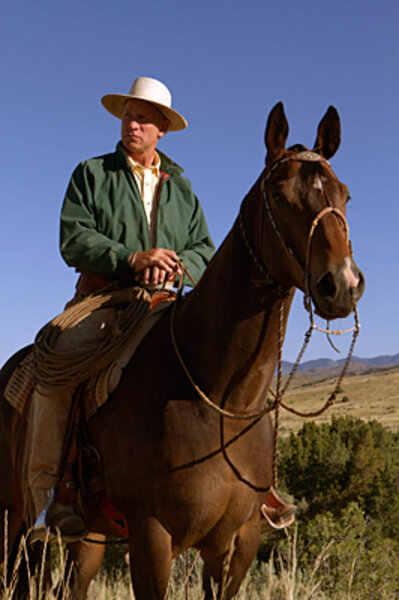Buck: movie review
Loading...
Near the beginning of the fascinating new documentary "Buck," Buck Brannaman, who runs horse-training clinics around the country, says, "A lot of times, rather than helping people with horse problems, I'm helping horses with people problems."
Brannaman is the subject of first-time filmmaker Cindy Meehl's graceful look at the man who was the inspiration for Robert Redford's role in "The Horse Whisperer." Nicholas Evans, who wrote the novel upon which that film is based, calls Brannaman the zen master of the horse world."
Based at his ranch in Sheridan, Wyo., Brannaman, soft-spoken and often wearing a white straight-brim hat, spends nine months of the year traveling the country in truck and trailer conducting his four-day clinics. A protégé of Tom Dorrance and Ray Hunt, who developed the method of horse training known as "natural horsemanship," which advocates mutual respect between rider and steed, Brannaman was an accomplished rider from an early age.
Mercilessly trained by his father, Brannaman and his brother became known as the roping stars Buckshot and Smokie, The Idaho Cowboys. (They once appeared on the popular TV show "What's My Line?") When his father's violent abuse, which included frequent whippings, became too great, Brannaman was placed by court order in a foster home, where he received the kind of loving care that, going forward, would mark his own conduct – not only toward horses but also toward people.
This is not to say that Brannaman is some kind of flower child on the range. His zenlike authority conceals a steel will. In the film's most shocking, and necessary, sequence, a woman brings Brannaman a dangerously violent animal – he actually bites one of Brannaman's associates in the head – and the decision is eventually made to put the horse down. But even here, Brannaman is respectful, allowing the horse to enter without overt coercion the trailer that will take him to his death.
It's obvious that Brannaman's almost preternatural empathy with horses stems from his own abuse as a child. This is why he is so tolerant even of that horse that had to be put down – a stud who had been deprived of oxygen during a difficult birth and, without training, terrorized a series of owners.
It's easy to dismiss Brannaman's techniques as holistic mumbo jumbo, but who can argue with his results? His anthropomorphic conception of horses has its wistful, Disneyfied side – we would all like to believe that the animals in our lives profoundly understand and respect us – but the point here is that Brannaman's approach is finally as much about people as about horses. The riders who appear in "Buck" seem almost uniformly exalted by their contact with Brannaman and his methods.
Does this mean that these people carry over into their own lives the respectfulness they have demonstrated with horses? The film never really answers that question, but something like this has happened in Brannaman's life with his wife and daughter, herself an accomplished rider. Some of the family footage veers uncomfortably close to a testimonial, but it should not matter, in the end, if Brannaman's life is as serenely accomplished as his horse training. "Buck" is about larger things. It celebrates a communion between man and animal that runs deeper than any division. Grade: A- (Unrated.)





